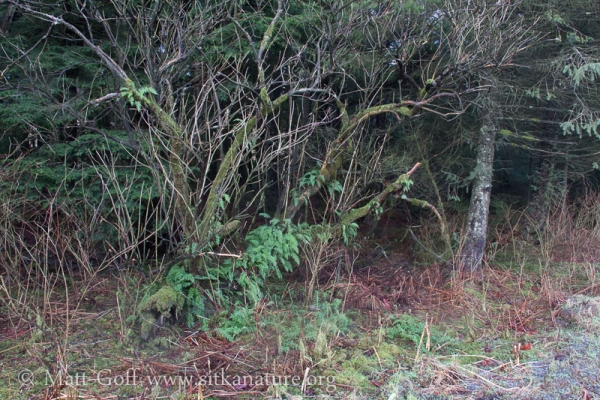Licorice fern (Polypodium glycyrrhiza) is commonly found as an epiphyte (I think of it mostly on red alder and elderberry, but now that I think about it, I’m not sure it doesn’t occur on other trees and shrubs as well). So I was not surprised to see a bunch growing on an elderberry (Sambucus racemosa) near the edge of the bike path along Totem Park a couple of weeks ago. What did stand out to me a bit more was where the ferns were growing on the ground. It’s a little hard to tell from the photo, but the licorice ferns on the ground were pretty much limited to underneath the elderberry branches. In looking around the area, I did find a couple of other licorice ferns on the ground, but those seemed to be kind of exceptional.
My immediate thought was that perhaps the ferns on the ground had come from the ferns on the shrub. The most obvious means (to my mind) would be spores coming down and getting started there. Still, it seems like spores would be easily transported by the wind, so I’m not sure why they would only germinate in such a limited area. I can think of at least a couple plausible (to me, anyway) factors that might be influencing things. Perhaps there is something in the chemistry of the elderberry bark that licorice fern does well with, and the water dripping off the branches transports enough of whatever that might be to the ground, facilitating the growth of licorice ferns there. Also I wonder if licorice ferns can reproduce vegetatively, with such parts being much less prone to wind dispersal. Finally, maybe it’s just a density of spores thing – the spores that got carried by the wind dispersed pretty widely, while those that fell on calm days were much more concentrated immediately below the elderberry. If spore germination rates are low, then only where there is a significant concentration of them would there be a pattern of ferns growing.
These are all just guesses on my part, I would be interested to consider others, so if you can think of something, please leave a note in the comments.
